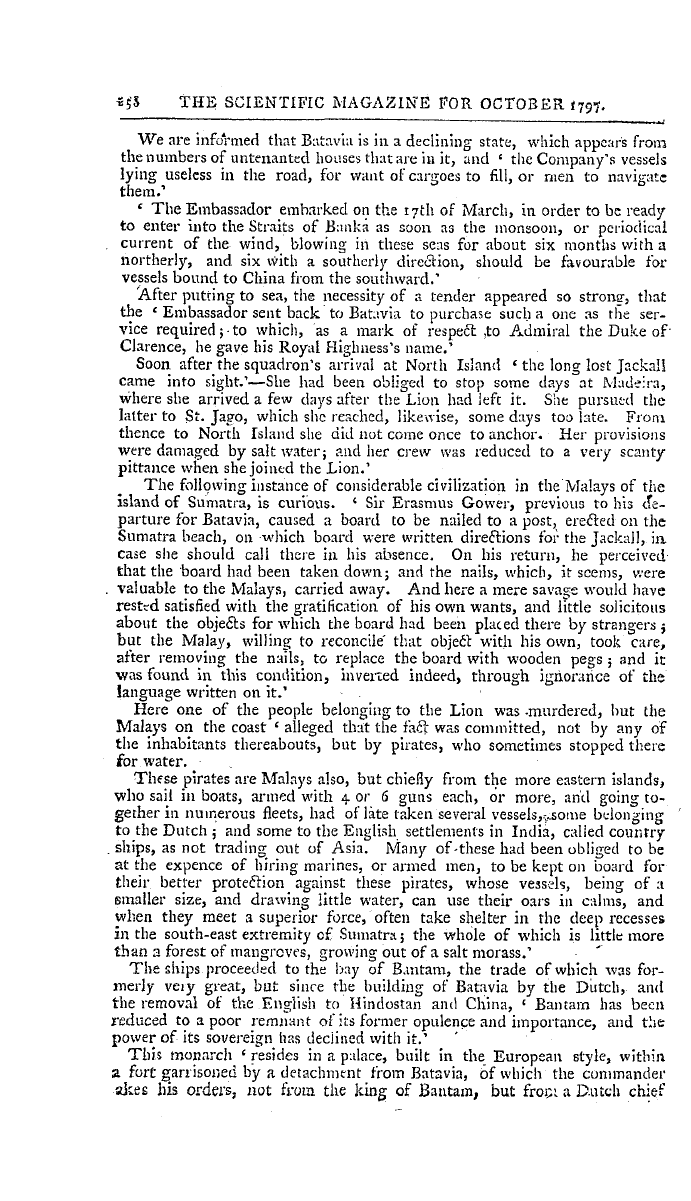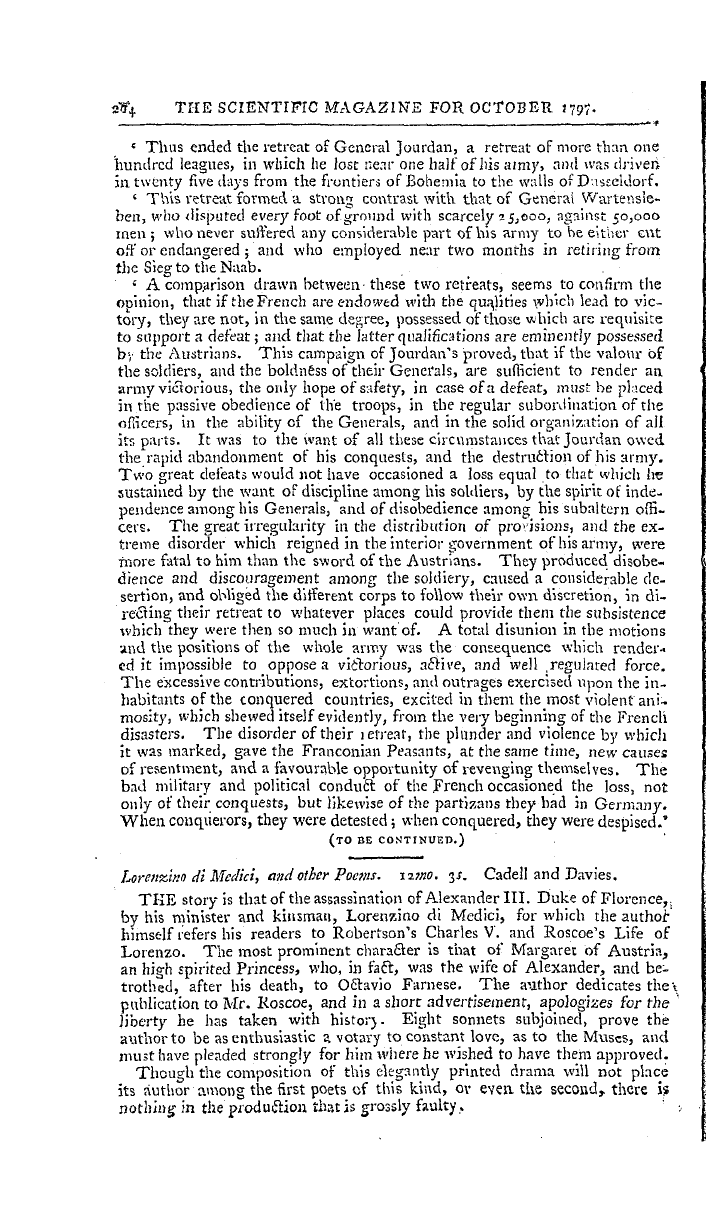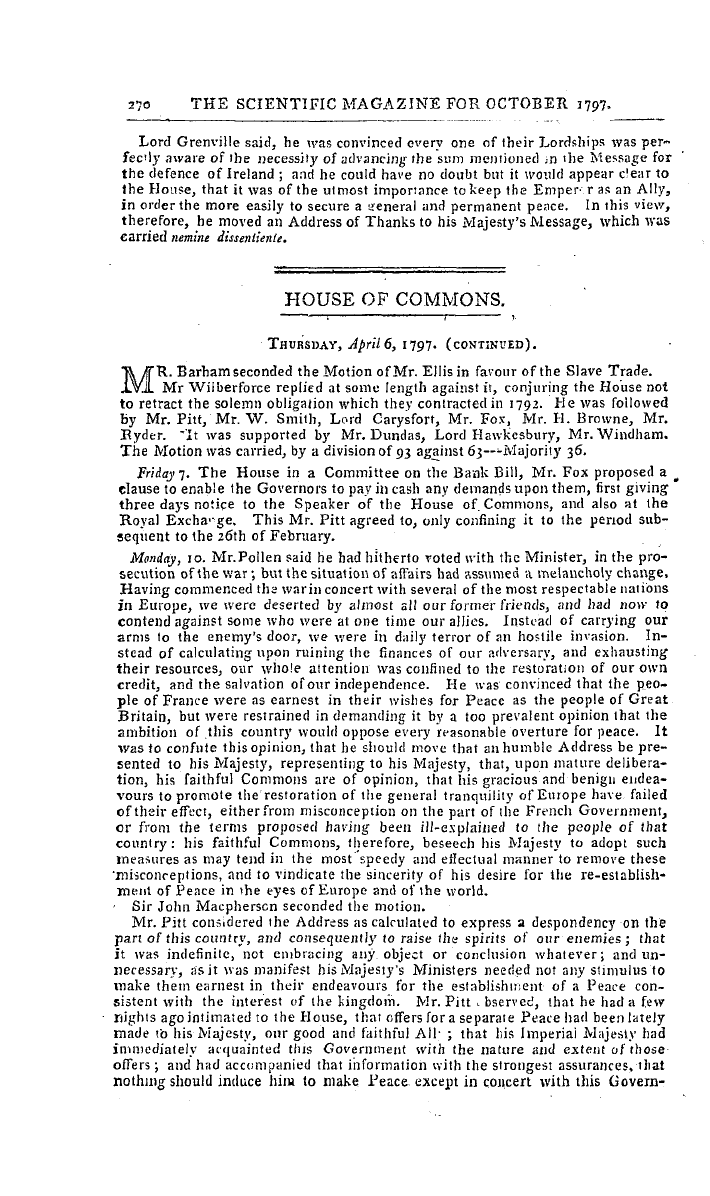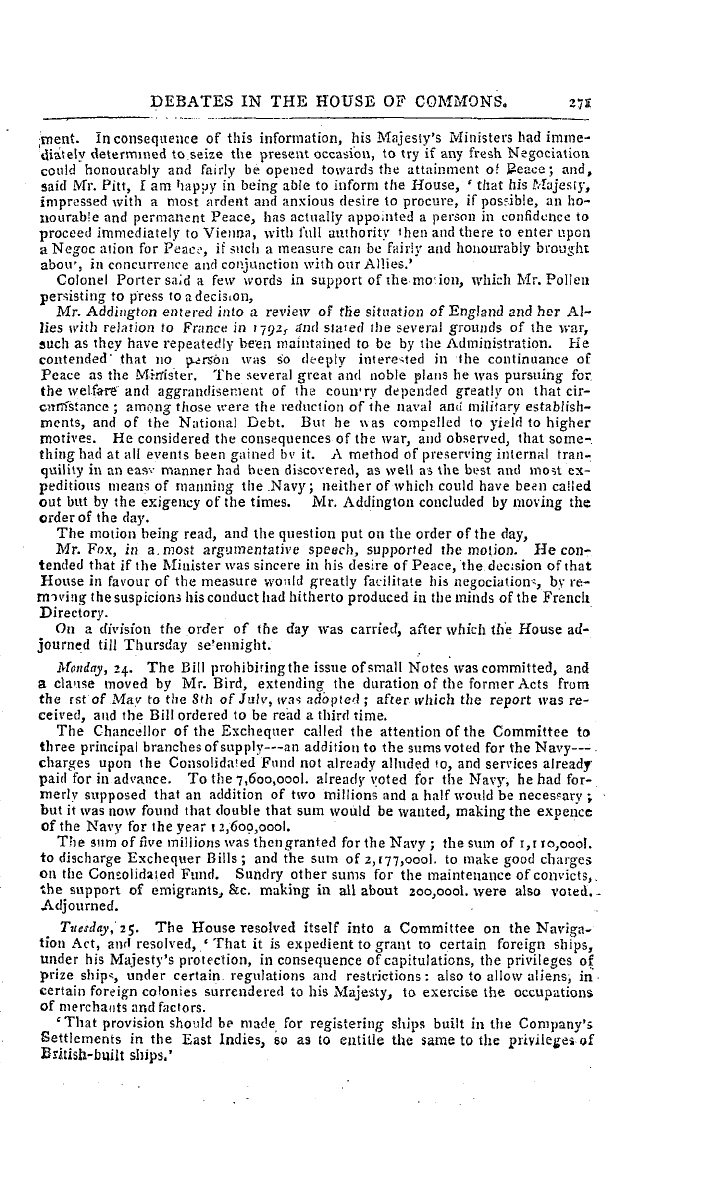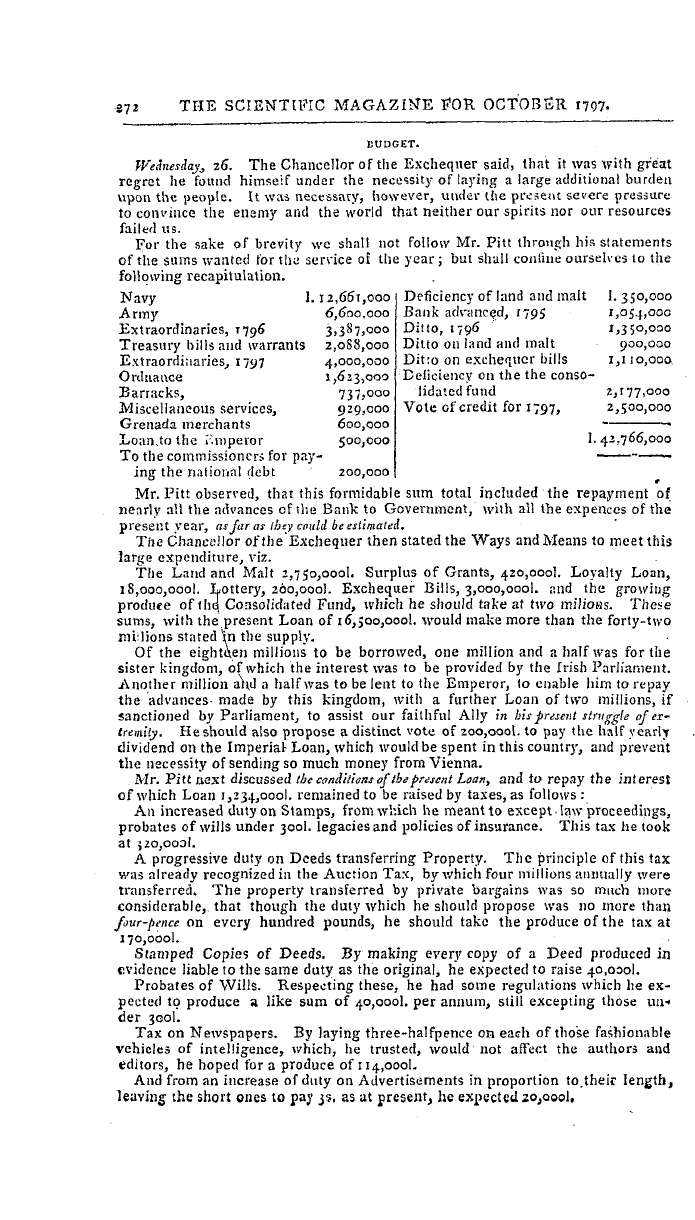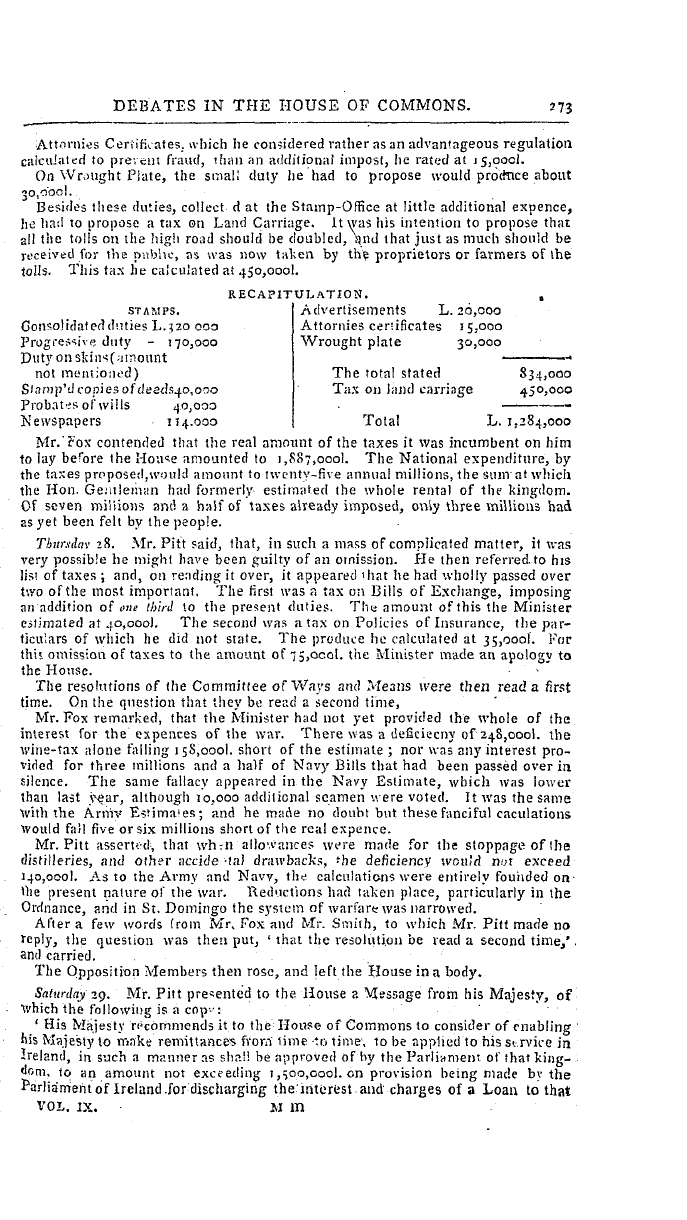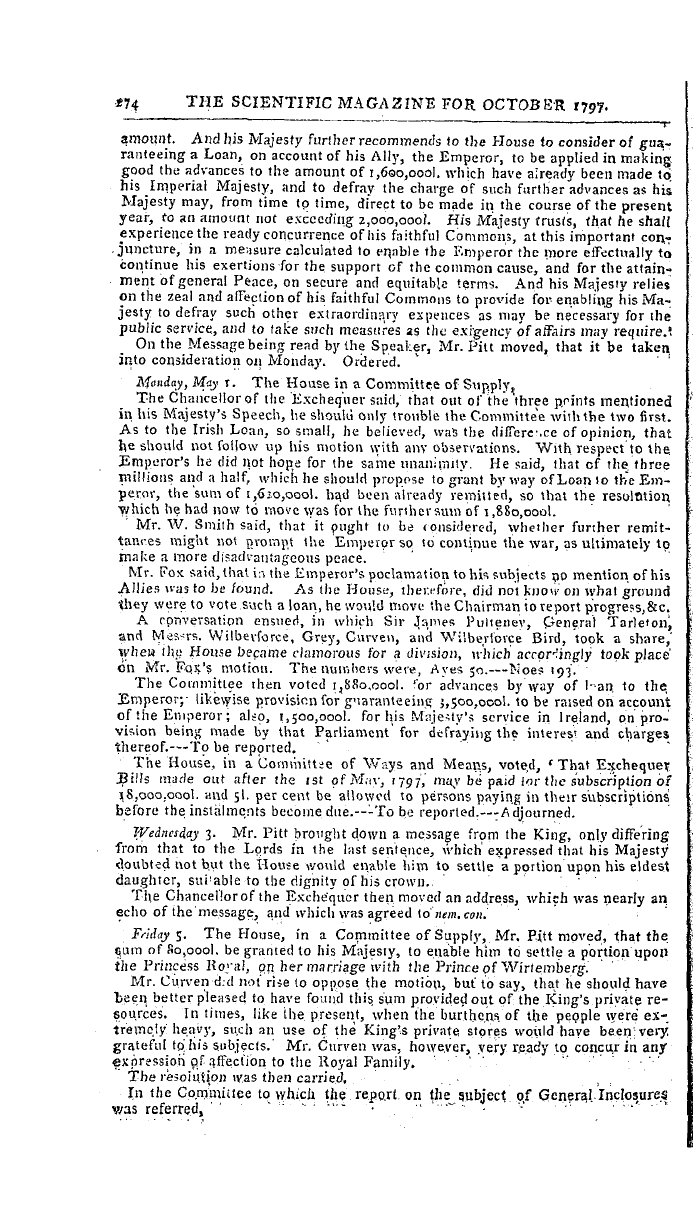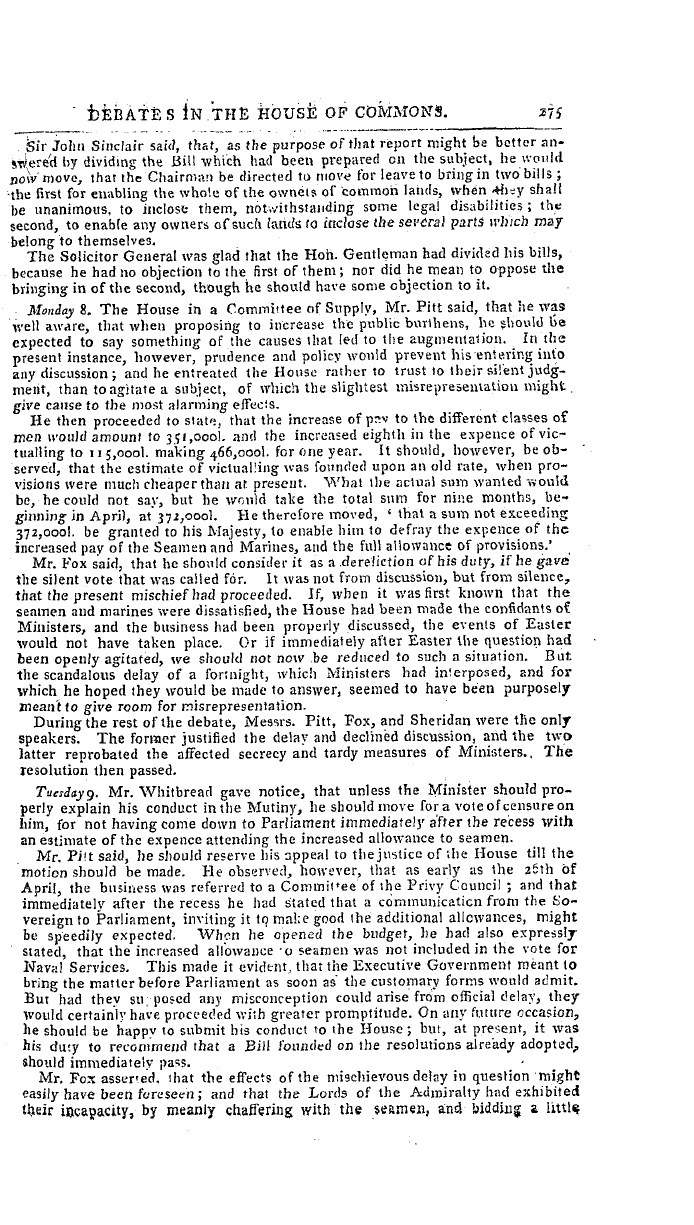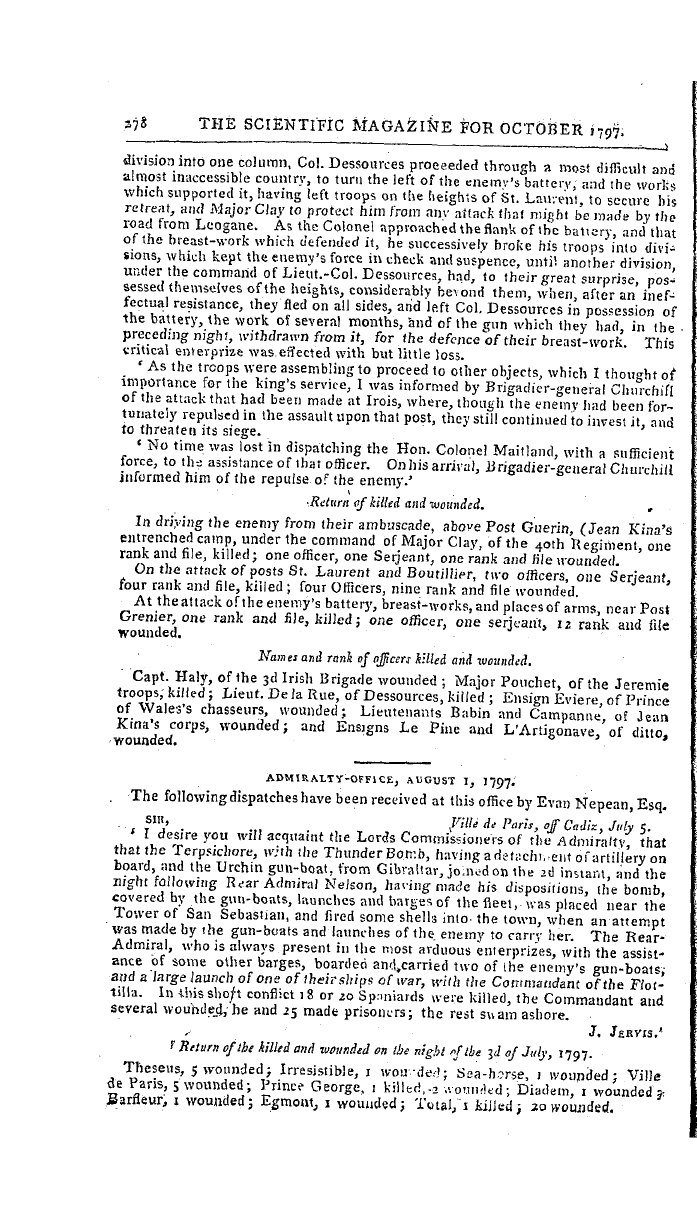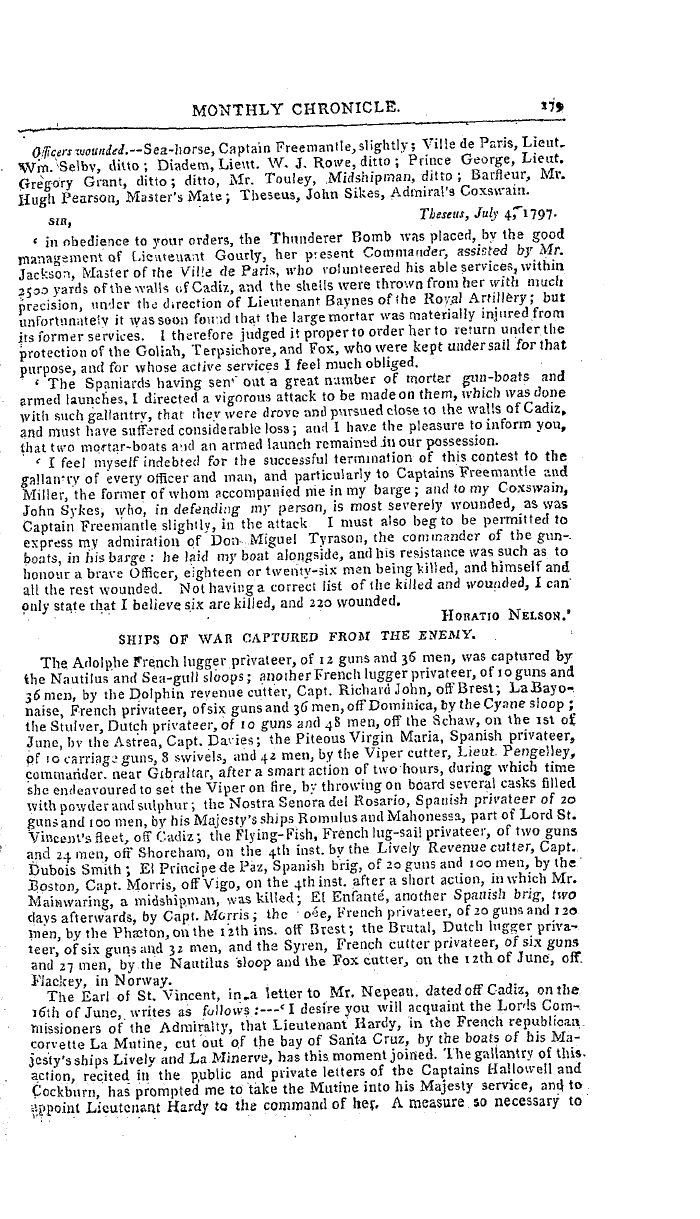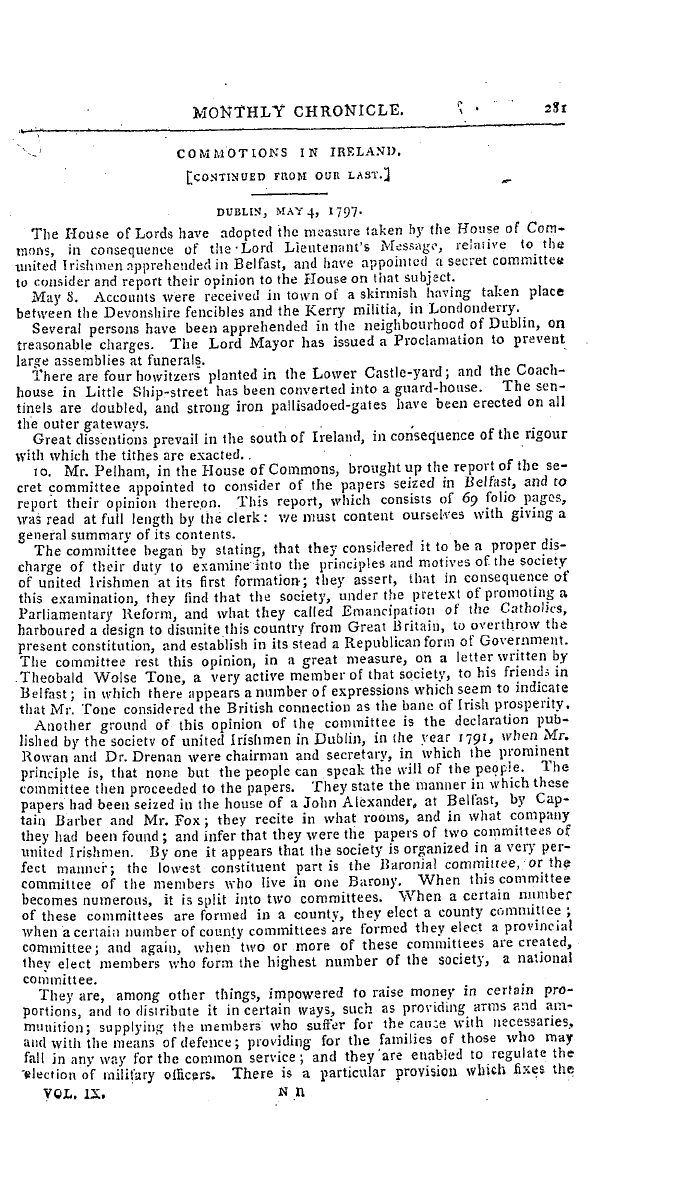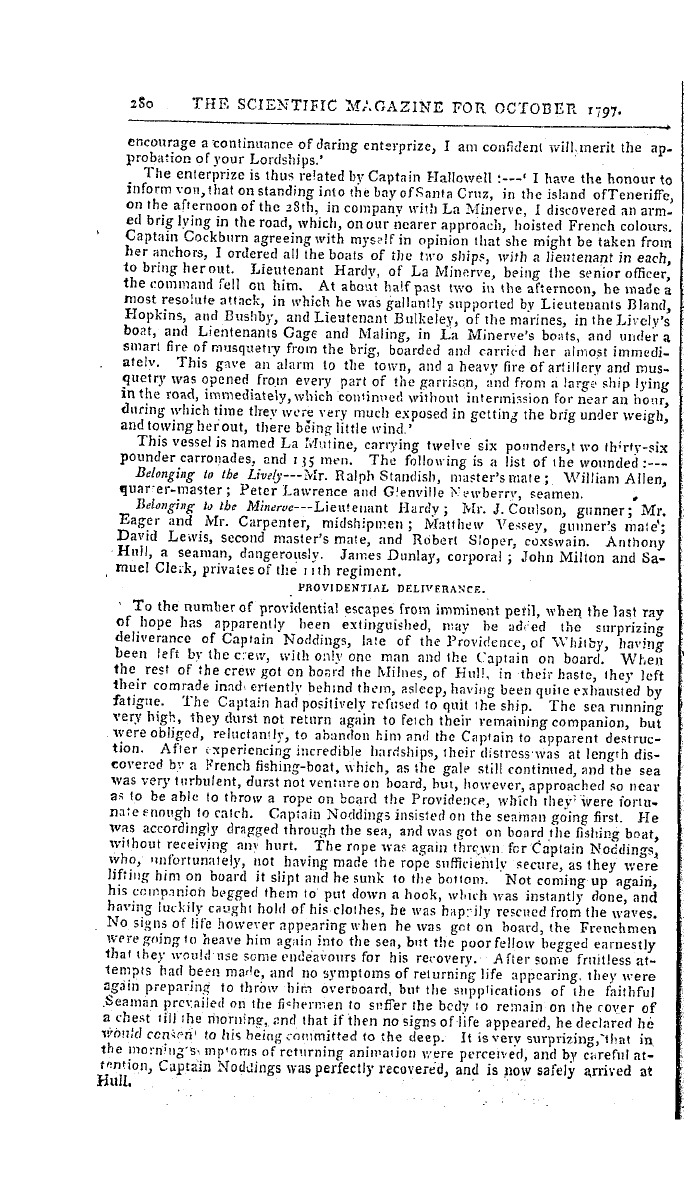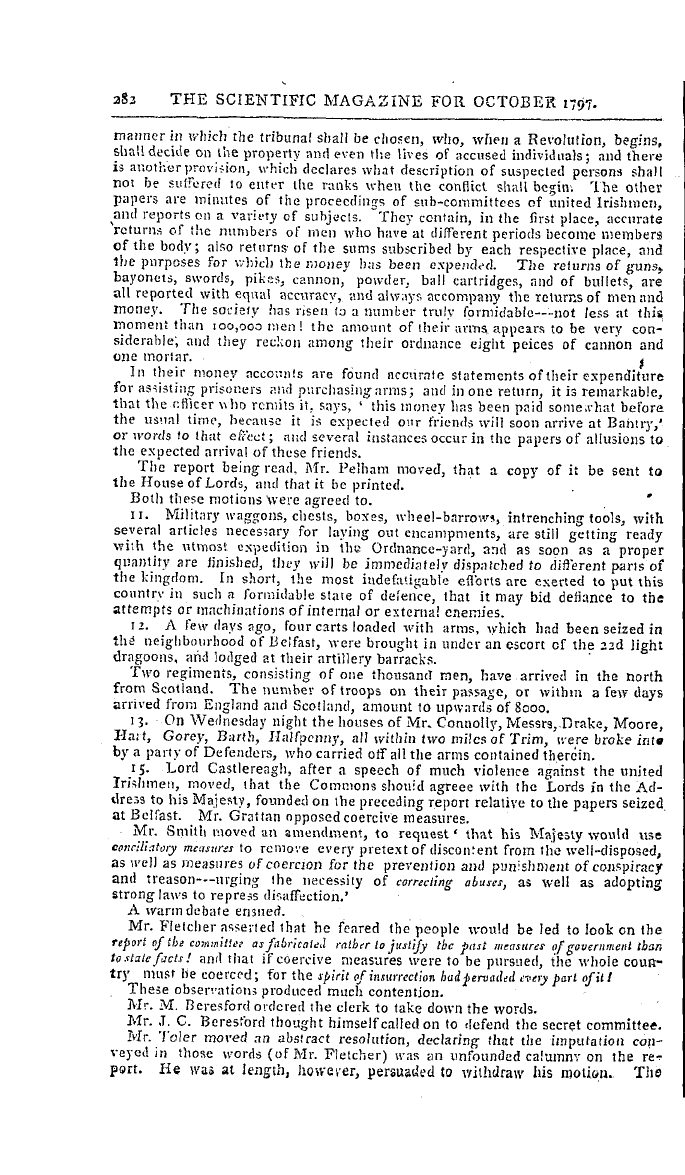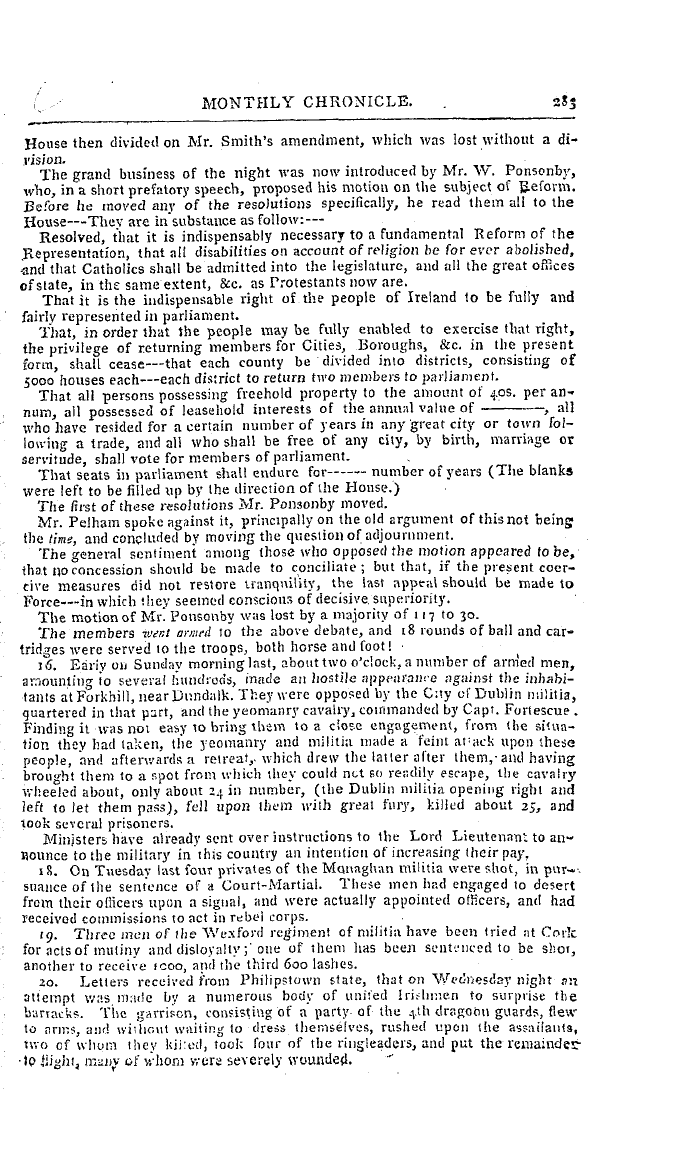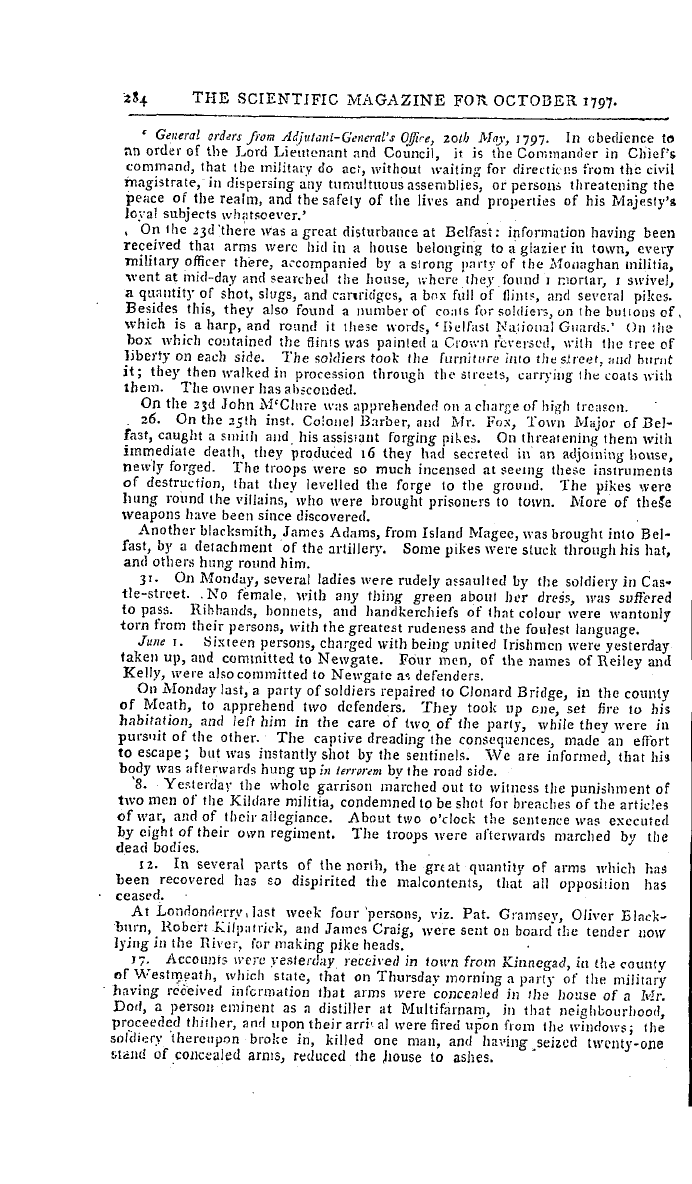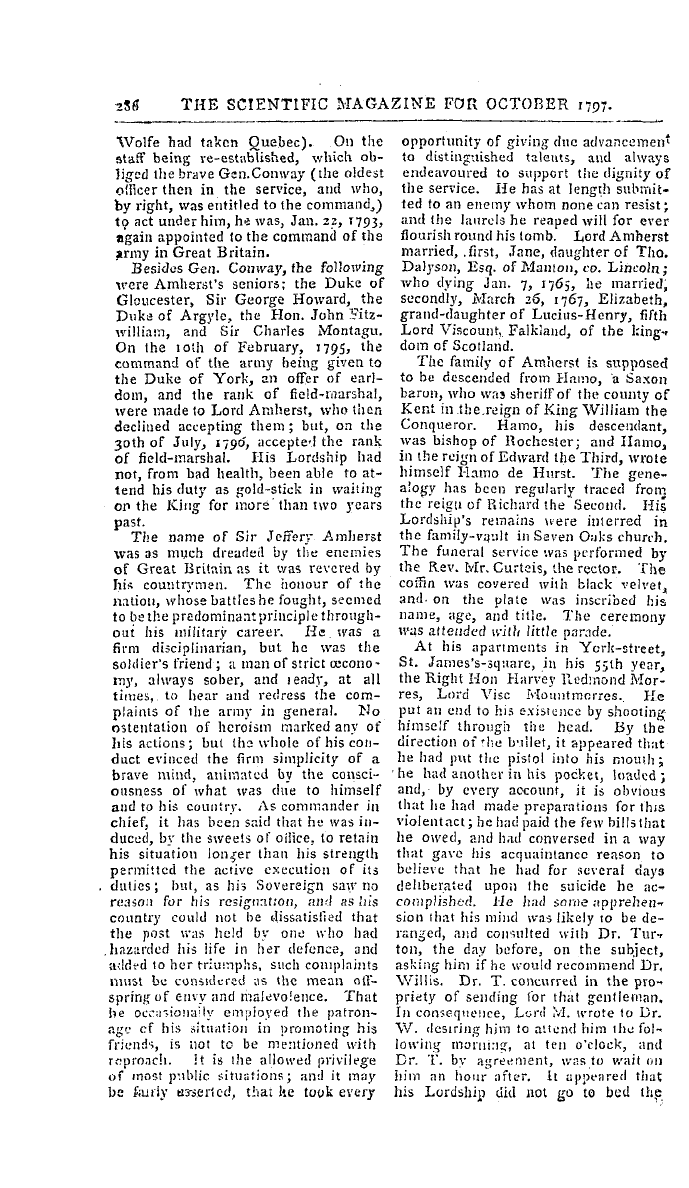Note: This text has been automatically extracted via Optical Character Recognition (OCR) software.
A Review Of The Life And Writings Of The Right Honourable Edmund Burke.
conclusions , which he afterwards exhibited . From his intercourse with Burke , he derived very great accession of knowledge . The power of rapid acquirement was successfully exerted , whew there was within its daily reach such a multiplicity of the most valuable stores . It is evident that , from the commencement of his connection with J 3 urkeFox displayed much greater copiousness of matterand
, , much more enlargement of political principle , than he had formerly brought forward . Now in Administration , Burke again proposed his Reform-bill , which , " with some modifications , passed into a law . [[ TO BE CONCLUDED IN OUR NEXT . ]
History Of The Sciences For 1797.
HISTORY OF THE SCIENCES FOR 1797 .
THEORY OF COMETS . [ CONTINUED raoM oun LAST . ]
\ 7 ARIOUS conjectures have been formed concerning the tails of * comets ; though it is universally agreed that they depend on the sun , because the ; , are always turned from him . Tycho and others thought that it was formed by the solar rays being transmitted through the nucleus of the comet , which they supposed to be transparent , and was there refractedso as to form a beam of liht
be-, g hind the comet . This , however , cannot he the case , because such refracted li ght could not be seen by a spectator placed sideways to it , unless it - fell on a substance sufficiently dense to cause a reflection . JDescartes held that the tail was owing to the refraction of the head of the comet ; but if so , then the planets and fixed stars would have tails also , for the rays pass from them through the same medium as
the li ght from the comets . Sir Isaac Newton was of opinion , that this tail is a thin vapour sent forth hy the head in consequence of its heat ; that it ascends from the sun , as the smoke from the earth ; that as the ascent of the smoke proceeds from the rarefaction of the air , in which it is entangled , causing that air to ascend , and carry the smoke up with it , so the sun ' s rays , acting on the coma or
atmosphere of the comet , heat the same by rarefaction and refraction ; that this heated atmosphere heats , and by heating ratifies , the aether that is involved therein ; and that the specific gravity with which such { Ether tends to the sun , is so diminished by its rarefaction , that it will now ascend from him b y its relative li ghtness , and carry with it the reflecting particles of which the tail is composed . Mai ran was
of a different opinion . He supposed the fc , iit , of the comets to be formed iff the luminous matter of which the sun ' s atmosphere consists . This he supposes 10 ex » end as far as the orbit of the earth , and to furnish matter for -he auroraborealis . M . de laLande suggests a method of reconciling these two opinions , by supposing that part of the matter which forms the tails to arise fiom their own atmosphere , ratified by heat , and pushed forward by the force of the li ^ ht
Note: This text has been automatically extracted via Optical Character Recognition (OCR) software.
A Review Of The Life And Writings Of The Right Honourable Edmund Burke.
conclusions , which he afterwards exhibited . From his intercourse with Burke , he derived very great accession of knowledge . The power of rapid acquirement was successfully exerted , whew there was within its daily reach such a multiplicity of the most valuable stores . It is evident that , from the commencement of his connection with J 3 urkeFox displayed much greater copiousness of matterand
, , much more enlargement of political principle , than he had formerly brought forward . Now in Administration , Burke again proposed his Reform-bill , which , " with some modifications , passed into a law . [[ TO BE CONCLUDED IN OUR NEXT . ]
History Of The Sciences For 1797.
HISTORY OF THE SCIENCES FOR 1797 .
THEORY OF COMETS . [ CONTINUED raoM oun LAST . ]
\ 7 ARIOUS conjectures have been formed concerning the tails of * comets ; though it is universally agreed that they depend on the sun , because the ; , are always turned from him . Tycho and others thought that it was formed by the solar rays being transmitted through the nucleus of the comet , which they supposed to be transparent , and was there refractedso as to form a beam of liht
be-, g hind the comet . This , however , cannot he the case , because such refracted li ght could not be seen by a spectator placed sideways to it , unless it - fell on a substance sufficiently dense to cause a reflection . JDescartes held that the tail was owing to the refraction of the head of the comet ; but if so , then the planets and fixed stars would have tails also , for the rays pass from them through the same medium as
the li ght from the comets . Sir Isaac Newton was of opinion , that this tail is a thin vapour sent forth hy the head in consequence of its heat ; that it ascends from the sun , as the smoke from the earth ; that as the ascent of the smoke proceeds from the rarefaction of the air , in which it is entangled , causing that air to ascend , and carry the smoke up with it , so the sun ' s rays , acting on the coma or
atmosphere of the comet , heat the same by rarefaction and refraction ; that this heated atmosphere heats , and by heating ratifies , the aether that is involved therein ; and that the specific gravity with which such { Ether tends to the sun , is so diminished by its rarefaction , that it will now ascend from him b y its relative li ghtness , and carry with it the reflecting particles of which the tail is composed . Mai ran was
of a different opinion . He supposed the fc , iit , of the comets to be formed iff the luminous matter of which the sun ' s atmosphere consists . This he supposes 10 ex » end as far as the orbit of the earth , and to furnish matter for -he auroraborealis . M . de laLande suggests a method of reconciling these two opinions , by supposing that part of the matter which forms the tails to arise fiom their own atmosphere , ratified by heat , and pushed forward by the force of the li ^ ht










































